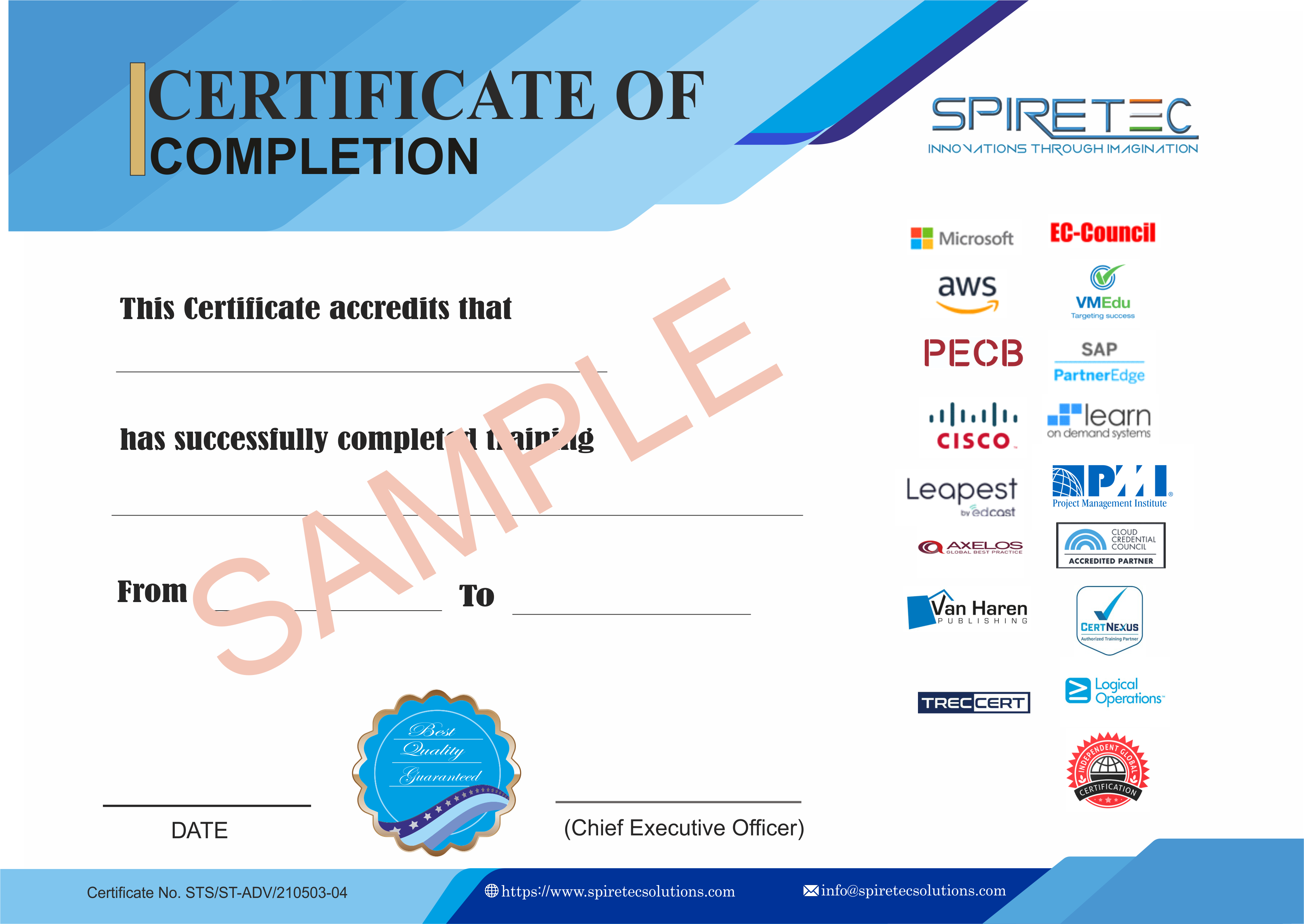The 55400 : Microsoft Power BI for End Users course provides comprehensive training for individuals looking to harness the power of Power BI to transform raw data into meaningful insights. This course is ideal for Power BI end users and those seeking Power BI end user training. It covers a range of topics from the basics of business intelligence, Power BI tools, and services, to more advanced techniques like data modeling, report design, and using workspaces and dashboards. Participants will learn to gather requirements, connect to sources, perform data transformations, model data effectively, and create compelling reports and dashboards that provide actionable insights. Additionally, the course includes practical labs to reinforce learning and enable users to apply Power BI features directly to real-world scenarios. By completing this course, learners will be well-equipped to utilize Power BI for their data analysis needs and contribute to data-driven decision-making processes within their organizations.
Audience Profile:
This course is for students looking to learn how to use the range of Microsoft Power BI tools to refine and model their data into a visual and interactive format. Students considering this course are not required to have any prerequisite knowledge of Power BI or experience working on data modeling-related tasks.
At Course Completion:
-
You will know which Power BI tool to use for different projects.
-
You will be able to connect to and maintain connections to data sources.
-
You can query your data sources to refine the data you are pulling into your project.
-
You can optimize a data model to enhance the performance of your reports.
-
You will know how to use Data Analysis eXpression (DAX) language to create columns and measures.
-
You can create dimensional hierarchies and plot geographical data.
-
You can create engaging, visual reports from your data model.
-
You’ll be able to publish your project to a workspace and manage it from the Power BI web service.
-
You will be able to build dashboards to aggregate essential visuals from reports.
-
You will be able to share your reports with colleagues.
Prerequisites:
Course Outline:
Module 1: An Introduction to Power BI
In this module, we will give a brief overview of what Business Intelligence is and what Power BI is. Power BI consists of multiple tools, which we will explore the purpose of and their core features. We will also make you aware of some essential resources for users learning about Power BI.
Lessons:
Lab 1: Getting Ready
After completing this module, students will be able to:
-
Understand the concepts of business intelligence.
-
Have an overview of Power BI.
-
Be aware of the selection of tools available in the Power BI suite.
-
Know where to go for support on updates, where to ask questions, and which communities to join.
Module 2: Requirements Gathering
Typically, a business intelligence project focuses on a variety of themes, and understanding them will help you take your first steps towards successfully completing a BI project. This module will help you understand grain statements, a way of understanding what objectives your project is expected to achieve.
Lessons:
Lab 1: Build a report in Power BI web
-
Connect to an Excel spreadsheet
-
Build visualizations
-
Create a dashboard for desktop and mobile users
-
Share your report and dashboard
After completing this module, students will be able to:
-
Understand the requirements for a business intelligence project.
-
Be aware of the stages of a project and which tools to use.
-
Know how to create a basic report and dashboard in Power BI web.
Module 3: Extract, Transform, and Load Data
The Power BI web service is a quick tool for creating reports, but it lacks the depth to truly configure your data. In this module, we will introduce Power BI Desktop, an application that data analysts can use to work on Power BI projects.
Lessons:
-
Creating a project with Power BI desktop
-
Pinning an active project
-
What is in a PBIX file?
-
Connecting to data sources
-
Managing data connections
-
Refine data with Power Query
-
Applied steps
-
M code language
-
Designing your query
-
Choose columns
-
Rename columns
-
Moving columns
-
Formatting columns
-
Replacing values
-
Expanding related columns
-
Star schemas
-
Merge columns
-
Split columns
-
Custom and conditional columns
Lab 1: Starting a project in Power BI desktop
-
Creating a new PBIX project file
-
Connecting to data sources
-
Use the query editor to refine data
-
Review the table relationships
-
Optional – Connect to an Azure SQL database
After completing this module, students will be able to:
-
Start a new Power BI project using Power BI Desktop.
-
Connect to a range of data sources.
-
Maintain data connections.
-
Design a query to refine their data.
Module 4: Creating a Data Model
A data model is the data found in one or more tables, from one or more sources. Understanding and maintaining relationships between the tables is essential for optimizing your data model.
Lessons:
-
Understanding relationships
-
Cardinality
-
Cross filter direction
-
Hiding tables and columns
-
Formatting columns
-
Introducing DAX
-
Designing calculated columns
-
Creating measures
-
Adding lookup tables
-
Structuring data with dimensional hierarchies
-
Roles and row-level security
Lab 1: Designing a data model
-
Hide and format table columns
-
Create calculated columns
-
Create measures
-
Using geographical data and lookup tables
-
Create a dimensional hierarchy
After completing this module, students will be able to:
-
Format columns.
-
Review and manage table relationships.
-
Use DAX to create columns and measures.
-
Design data hierarchies.
-
Work with geographical data.
-
Implement row-level security.
Module 5: Designing Reports
The report utilizes information refined and calculated in your data model to create a visual experience that is interactive and tells a clear narrative.
Lessons:
-
Adding pages and navigation buttons
-
Using shapes, text, and images
-
Creating a theme
-
Adding visualizations
-
Using filters and slicers
-
Controlling filters
-
Adding drill-throughs
-
Adding custom visualizations
-
Configure phone layouts
-
Report tips
Lab 1: Creating a report
-
Creating new pages and adding basic content
-
Adding and configuring visualizations
-
Design slicers
-
Create bookmarks and navigational buttons
After completing this module, students will be able to:
-
Create pages in a report and design navigational buttons.
-
Add visualizations to a report.
-
Configure visualizations.
-
Implement filters and slicers.
-
Download new custom visualizations.
Module 6: Using Workspaces and Dashboards
In this module, we will cover the last stages of producing a report, which includes publishing and configuring a published project.
Lessons:
-
Power BI licensing
-
My workspaces
-
App workspaces
-
Premium capacity workspaces
-
Creating a new workspace
-
Publishing a project
-
Parallels with Microsoft Excel
-
Publishers and viewers
-
Reconnecting with data sources
-
Introducing the on-premises data gateway
-
Scheduling the data refresh frequency
-
Assigning security roles
-
Creating and populating dashboards
-
Customizing dashboard tiles
-
Creating tiles using Q&A and quick insights
-
Creating a mobile dashboard
-
Sharing reports and dashboards
-
Publishing apps in a workspace
-
Publishing content to websites
Lab 1: Publish and share reports and dashboards
-
Publish your project to Power BI
-
Create a dashboard
-
Use quick insights and pin visuals
-
Use Q&A to query your data source
-
Share your dashboard with marketing
After completing this module, students will be able to:
-
Publish your project and understand what licenses are required.
-
Configure a published data model to refresh periodically.
-
Understand what features Power BI shares with Microsoft Excel.
-
Use the on-premises data gateway.
-
Designate roles for row-level security.
-
Create desktop and mobile dashboards.
-
Share reports and dashboards.
-
Publish apps and feature your reports on websites.







 Live Online Training (Duration : 16 Hours)
Live Online Training (Duration : 16 Hours)
